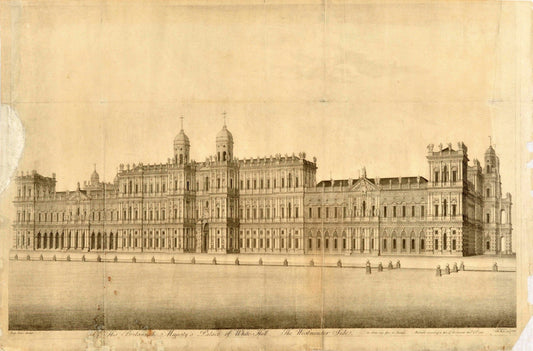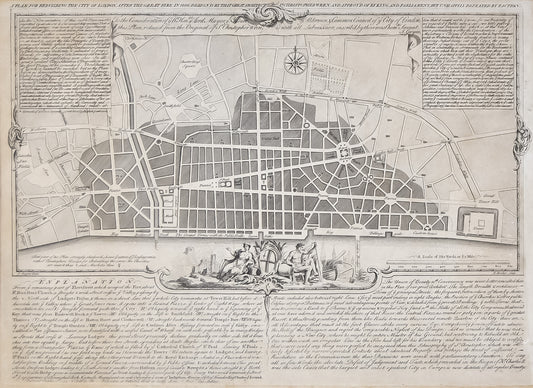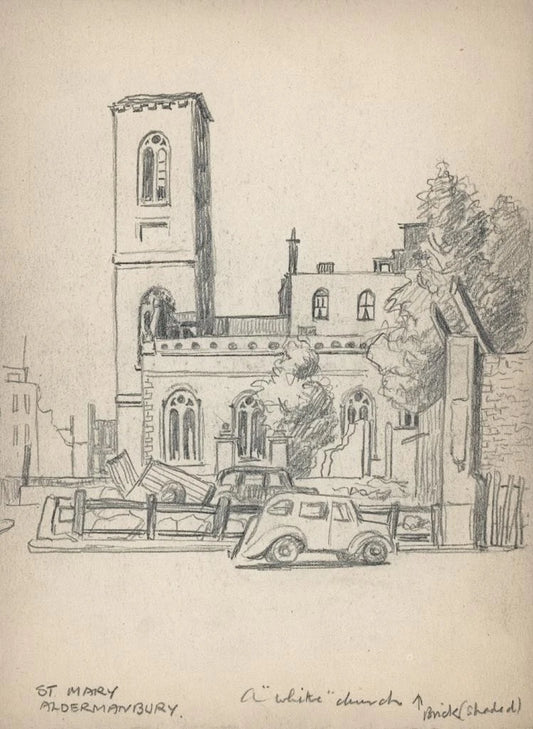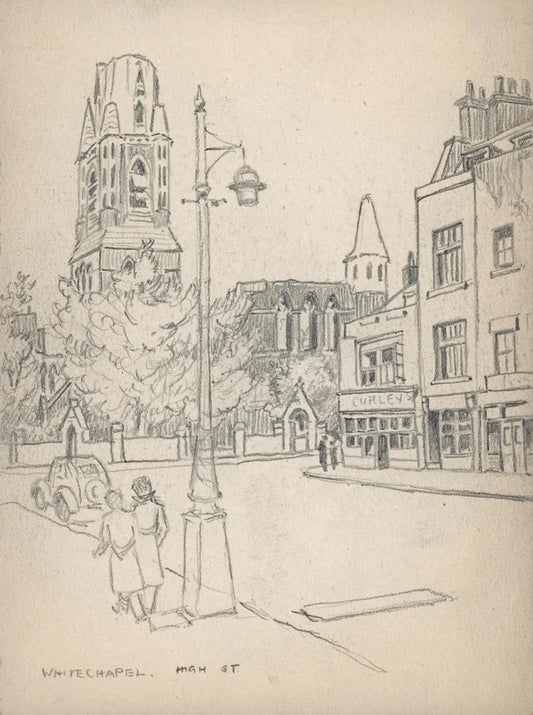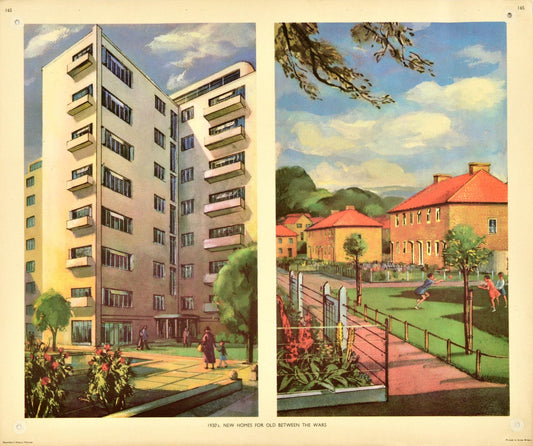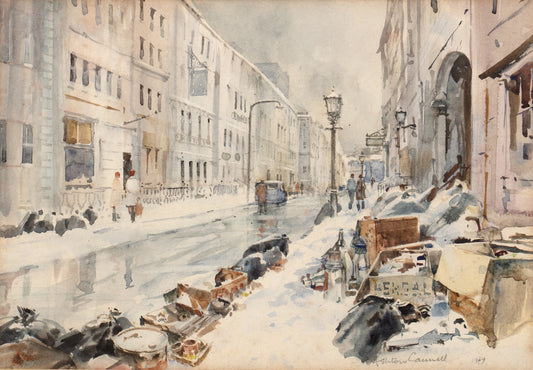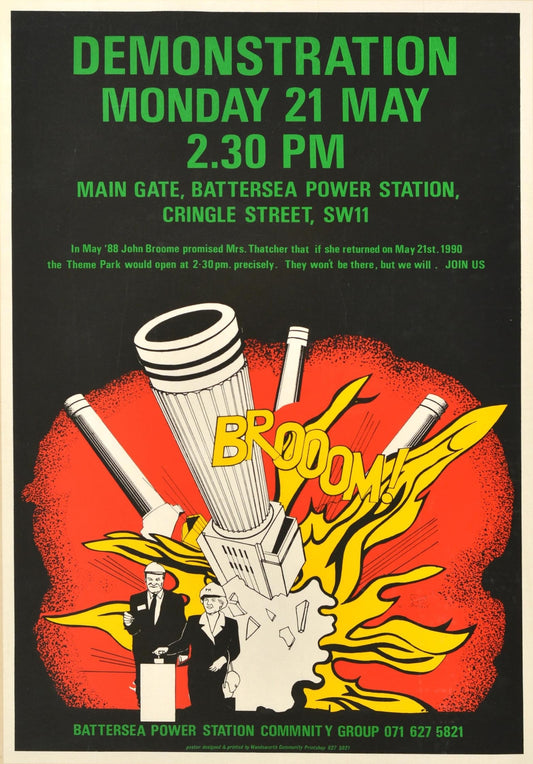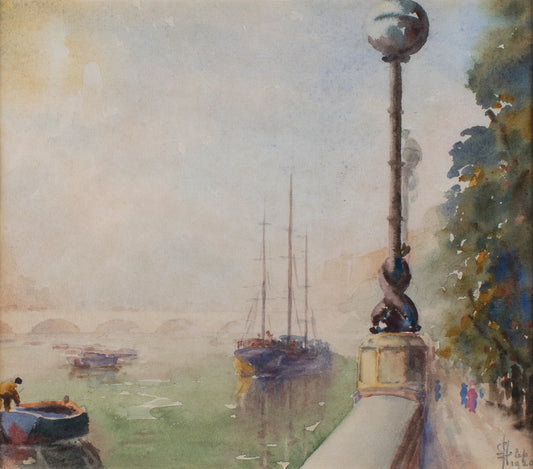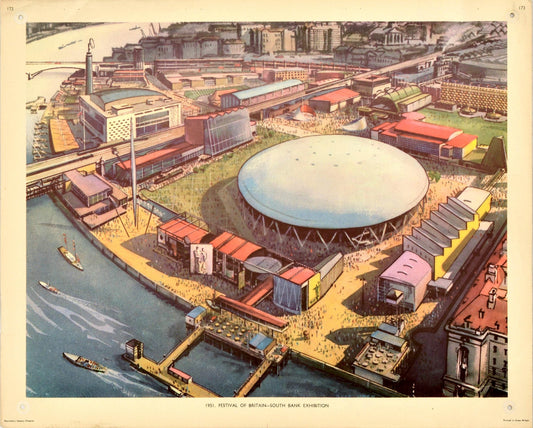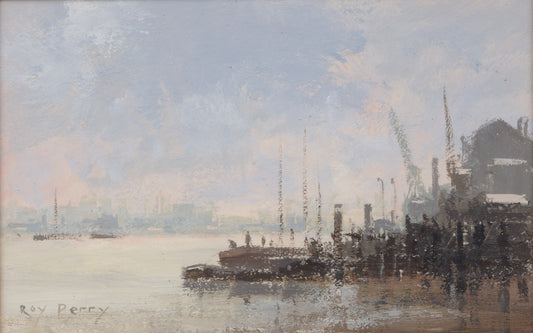
Curated by McEwing-Sexton-Smedley Fine Art, and exhibited at Create Streets Foundation.
With thanks to Gerrish Fine Art for additional artworks.
27th June, 30th June - 3rd July 2025

Shadow City explores the lost and imagined forms of London, seeking to uncover the forgotten and obscured elements of London’s past. The exhibition spans three centuries - from the late 17th century with Christopher Wren’s plans for rebuilding the City after the Great Fire, to the late 20th century, with a rare contemporary depiction of the Winter of Discontent and artworks opposing the potential conversion of Battersea Power Station into a theme park.
As Nicholas Boys Smith writes in the foreword to the accompanying catalogue: How many Londons are there? How many Londons have there been? How many Londons were never created? Would Charles Dickens identify modern Vauxhall as London? Would we discern our local high street beneath its Victorian clothing of costermongers and striped awnings, market stalls and hackney carriages, parasoled-ladies and sandwich men? Surely no time-travelling Tudor burgher would recognise the modern city? However, position him carefully in Westminster Abbey, besides Staples Inn, in Middle Temple or by the Charterhouse and he might. Can a city keep changing and still be the same place? And, as we walk the streets of modern London, can we imagine the shadow cities besides us of what was and what might have been?
Shadow City is divided into three sections. ‘A Modern Babylon?’ reflects on the development of the modern perception of London, and the elements of it that have been lost to our modern understanding. ‘Late Victorian Chelsea’ contains a wealth of engravings by Theodore Roussel, depicting the life and energy present within Victorian Chelsea. ‘Changing Tides’ explores the development and decline of the Thames, from the Port of London’s rapid expansion in the late 18th century to the Post-War collapse of London’s docks.
A Modern Bablyon?
-
Palace of White-Hall
Regular price £700.00 GBPRegular priceUnit price / per -
Christopher Wren’s Plan for Rebuilding the City of London
Regular price £250.00 GBPRegular priceUnit price / per -
A Heath (Hampstead Heath)
Regular price £0.00 GBPRegular priceUnit price / per -
William Nicholson's 'London Types'
Regular price £0.00 GBPRegular priceUnit price / per -
Znarr at Arcady Street
Regular price £0.00 GBPRegular priceUnit price / per -
St Mary Aldermanbury
Regular price £100.00 GBPRegular priceUnit price / per -
St Mary Matfelon, Whitechapel
Regular price £100.00 GBPRegular priceUnit price / per -
New Homes for Old Between the Wars
Regular price £175.00 GBPRegular priceUnit price / per -
The Winter of Discontent (Wapping)
Regular price £400.00 GBPRegular priceUnit price / per -
Power Station 'Disneyland'
Regular price £500.00 GBPRegular priceUnit price / per -
Demonstration Monday 21 May
Regular price £500.00 GBPRegular priceUnit price / per
Late Victorian Chelsea
-
Chelsea Regatta
Regular price £0.00 GBPRegular priceUnit price / per -
Chelsea Palaces
Regular price £0.00 GBPRegular priceUnit price / per -
The Gate, Chelsea (No. 4 Cheyne Walk)
Regular price £0.00 GBPRegular priceUnit price / per -
The Sign of the White Horse, Parson’s Green
Regular price £0.00 GBPRegular priceUnit price / per -
The Saw Mill, Putney
Regular price £0.00 GBPRegular priceUnit price / per -
Events Over the Railings, Chelsea Embankment
Regular price £0.00 GBPRegular priceUnit price / per -
Emma and Her Baby
Regular price £0.00 GBPRegular priceUnit price / per
Changing Tides
-
Design for a Double Bridge
Regular price £700.00 GBPRegular priceUnit price / per -
Opening of Waterloo Bridge (18th June 1817)
Regular price £0.00 GBPRegular priceUnit price / per -
View of the Embankment
Regular price £300.00 GBPRegular priceUnit price / per -
Barn Owl at the Wharves
Regular price £0.00 GBPRegular priceUnit price / per -
Festival of Britain - South Bank Exhibition
Regular price £175.00 GBPRegular priceUnit price / per -
Towards Limehouse
Regular price £250.00 GBPRegular priceUnit price / per -
Old Waves, Rotherthithe
Regular price £250.00 GBPRegular priceUnit price / per
